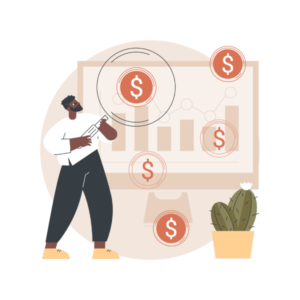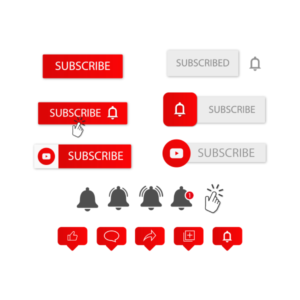Customer churn is a critical aspect that every SaaS business must understand to grow and maintain a healthy revenue stream.
This article will uncover common myths and mistakes surrounding churn, providing valuable insights into what companies should focus on and what they should save their time on while retaining revenue.

What is Customer Churn?
Customer churn, or attrition, refers to the percentage of customers who cease using a company’s products or services within a specific period. It is a crucial metric for assessing a business’s sustainability and long-term success by measuring its ability to retain customers.
How to Calculate Churn Rate/Retention Rate
The formula for churn rate is not complicated. You can calculate your churn rate by dividing the number of customers lost during a period (X) by the total number of customers at the beginning of that period (Y).
Churn Rate Formula: X / Y * 100 = churn rate (%)
The retention rate refers to the percentage of users the business retains over a set period of time. It is calculated as the opposite of the churn rate, by subtracting your churn rate from 100%.
Retention Rate Formula: 100% – Churn (%)
Bonus: Check out more Retention & renewal metric formular in this infographic.
What Are Some Good Percentages for Churn Rate?

A desirable churn rate varies depending on the industry and the size of a business. However, maintaining a churn rate between 2-8% for most SaaS companies is generally acceptable.
Monthly vs. Annual Churn – Keep Both in Mind
Evaluating monthly and annual churn rates is crucial as they provide different perspectives on customer retention. For example, a 5% monthly churn rate is a significantly more substantial number of lost customers than a 5% annual churn rate.
As a rule of thumb: Monthly churn rates help identify short-term trends and issues, while annual churn rates offer a more comprehensive view of long-term customer behavior.
The Main Churn Myths That Can Cost Your Business Valuable Customers
Myth #1: “Negative churn is a bad sign”
Negative churn occurs when your additional revenue from existing customers (from subscription upgrades, upsells, add-ons, product options or professional services) is greater than the revenue lost to churned customers.
Here’s a simple formula for calculating negative churn:
Negative Churn = (New Customer Revenue) + (Existing Customer Revenue) – (Churned Customer Revenue)
Contrary to popular belief, negative churn is a positive sign, indicating growth and expansion within your existing customer base. However, it’s essential to know that not all churn is created equally, and understanding their difference is key to business success. We’ll touch upon that later on in this article.
Myth #2: “Improving the churn rate requires resurrecting inactive customers”

While re-engaging inactive customers can have some benefits, it’s important to understand that not all churned users are ideal for reactivation and focusing solely on increasing the customer base is unsustainable.
This is because not all churned customers are valuable, ideal, or viable for revival.
Some of them may not align with your company’s core values, while others may have churned due to financial reasons or a lack of product fit. Whenever you spend time resurrecting churned customers, you divert your attention away from the more valuable customer segments currently engaged with your business.
An important aspect to consider in reactivating customers is the cost of re-activation. If this is higher than the CAC for a new subscriber, then your money might be better spent in expanding the new install base.
Instead of viewing churn as a reactivation problem, companies should rebrand their thinking and view churn as a retention issue. This perspective emphasizes understanding the needs and wants of customers and helps create retention strategies that engage customers who fit the ideal profile.
Bonus: Check out our eBook on Retention Strategies for Software & SaaS.
Myth #3: “5% churn is the norm for SaaS”
Although a 5% churn rate is generally acceptable for SaaS companies, it’s crucial to consider individual circumstances and strive for continuous improvement. Different industries and markets may have varying churn benchmarks. That’s why businesses should focus on their specific context and work to reduce churn rates accordingly.
While churn is inevitable, the profitability of a business largely depends on its ability to retain existing customers.
This is why it’s critical to always review your churn rate, and take any necessary steps to bring it back to an acceptable level.
Myth #4: “Churn means the end of a customer’s journey”
Churn is not necessarily the end of a customer’s journey – and it’s not a conclusive “goodbye” to a customer either. Churned customers can still provide valuable feedback and may even return if they had a positive experience.
It’s important to understand that churn can also represent an opportunity for learning, improvement, and potential re-engagement.
As mentioned above, reframing churn as a retention problem can help businesses understand the full customer journey rather than just focusing on a single moment. This perspective encourages companies to segment different use cases or audiences, analyze how retention impacts each, and assess behavior over an appropriate timeline.
By emphasizing the entire customer journey, companies can identify patterns and trends that may not be immediately obvious but provide valuable insights to enhance the customer experience, improve offerings and build stronger relationships.
Why Not All Churn Is Bad, and What Can Influence It

Churn is not always a negative indicator.
Some churn can result from customers outgrowing a product, market changes, or customer segmentation. It’s essential to analyze churn rates alongside other metrics to understand customer behavior and the factors influencing it.
Factors to be considered when analyzing churn rates
Company size
Larger companies with more resources can often invest more heavily in customer retention strategies, leading to lower churn rates. Conversely, smaller companies might experience higher churn rates due to limited resources and scaling challenges.
Industry-specific price sensitivity

Price sensitivity varies across industries. For instance, in highly competitive markets with multiple similar offerings, customers may be more likely to churn due to price fluctuations. That’s why it’s crucial to emphasize value and invest in customer onboarding and education, ensuring that customers perceive the purchase as justifiable and worthwhile.
Inconsistent data
Accurate and consistent data is crucial for calculating and analyzing churn rates. Inconsistent or incomplete data can lead to skewed results, making it difficult to determine the ideal churn rate for your business.
Intentional obfuscation
Some businesses may intentionally misrepresent their churn rates to obscure underlying issues. This deceptive practice can happen due to various reasons:
- Masking performance issues;
- Appeasing investors or shareholders;
- Competitive positioning
- Avoiding scrutiny or regulatory attention.
How to Prevent Churn
1. Focus on attracting the right customers
Target customers who will most likely benefit from your product and align with your ideal customer profile. Develop customer profiles to gain a clear understanding of the demographic characteristics and purchase behaviors of your target consumers.
2. Optimize pricing
Make sure your pricing structure is competitive, transparent, and reflects your product’s value.
Bonus: Access our free webinar on Pricing Optimization for eCommerce.
3. Inform your customers of the changes you’ve made
Make it a habit to tell your customers about product updates and improvements to show your commitment to customer satisfaction.
4. Upselling/Cross-selling/Subscription Upgrades

Encourage your customers to increase spending by offering upgrades or higher service levels. Make it easy for them to spend more by designing your service levels and pricing structures to be appealing and worthwhile.
At the same time, regularly engage with customers through account managers, and personalized outreach, and leverage automation, such as targeted emails, to suggest add-ons or upgrades based on customer activity.
5. Improve user onboarding
Streamline the onboarding process, making it simple for new customers to understand and adopt your product. Remember that customers who feel empowered to succeed with your business’s help are less likely to leave.
6. Deliver a great customer and product experience
Strive for excellence in customer support and product quality, ensuring customers have consistently positive experiences.
7. Use a PIM (Product Information Management) solution
It’s a great idea to use a PIM system to centralize and manage product data. This will help you enhance the accuracy and consistency of your product information.
8. Look for signs of customers about to churn
Use your subscription management engine to measure engagement of users with your products. For segments of customers with low product engagement, offer the option to pause their subscription for a limited period of time, or pitch them another more interesting product.
9. Define a roadmap for your new customers
Develop a step-by-step guide to help new customers get the most out of your product or service. Informed customers are more likely to stay!
Conclusion
In today’s competitive marketplace, understanding and effectively addressing churn is absolutely critical for companies looking to maintain steady revenue growth and achieve long-term success.
It’s important to remember that each business context is unique, and tailoring your approach to churn reduction is hence essential.
For example, while alarming, a high churn rate can be easier to address since the underlying problems are often more clearly seen. Tackling these issues head-on can substantially improve customer retention and satisfaction.
On the other hand, lowering a 7-10% churn rate is more challenging as the issues are less obvious and require more nuanced solutions.
Emphasizing customer satisfaction, implementing effective retention strategies, and continuously striving for improvement will enable businesses to cultivate a loyal customer base and drive lasting revenue growth.
By avoiding common mistakes and debunking myths, companies can hone in on what truly matters and focus their efforts on delivering exceptional value to their customers.